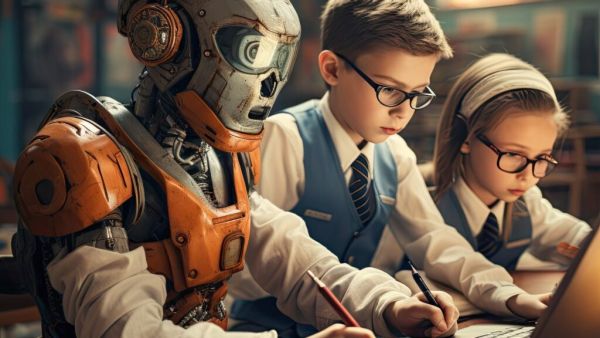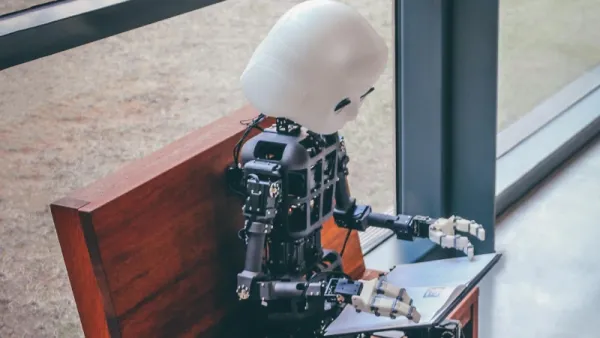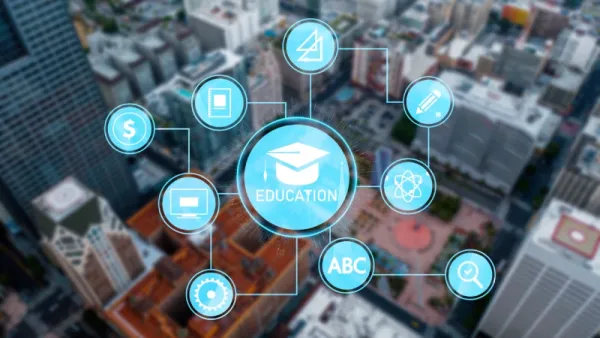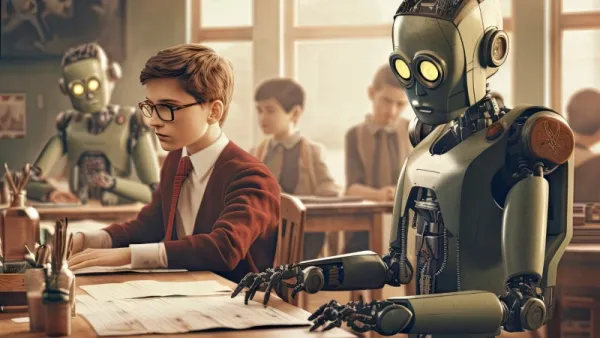
The United States has launched a pivotal national initiative to enhance AI in education among American youth. The purpose is to enable a generation to apply AI in solving real-life issues; that generation would become creators and innovators instead of merely consumers of technology. This grand-level effort commenced with the presidential executive order dated April 23, 2025.
This executive order intends to integrate AI instruction into the American education system from kindergarten to postsecondary pathways and the workforce. The stated goal is to keep the United States at the forefront of the technological revolution by providing its youth with essential knowledge and skills needed to understand, use, and develop AI across various areas, including healthcare, law, marketing, and the creative industries.

The initiative also underscores the importance of investing in teachers to equip them with the necessary tools and knowledge to effectively teach about AI, as well as to utilize it to enhance educational outcomes in their classrooms. The overarching policy calls for improving Americans’ AI literacy and proficiency through apt AI integration in education, full-fledged training for teachers, and early introduction to the concepts of AI to develop the AI workforce and nurture American AI innovations in the future. This initiative highlights the importance of demystifying AI for all students while fostering curiosity and creativity.
The establishment of the White House Task Force on AI Education is a key component of this national plan. The Task Force is responsible for directing and coordinating federal efforts to AI education, chaired by the Director of the Office of Science and Technology Policy (OSTP).
Its membership represents a broad swath of cabinet secretaries and advisors, including the Secretaries of Agriculture, Labor, Energy, and Education, as well as the Director of the National Science Foundation (NSF) and the Special Advisor for AI & Crypto. It’s this diverse composition that brings forth the whole-of-government approach to implementing AI education policies and coordinating federal initiatives.
Adding to an already inspiring climate for education, the Presidential Artificial Intelligence Challenge is yet another innovation for encouraging learning. This program recognises and celebrates work done in AI, acting as a motivation for pupils and students to explore the application of AI in developing new applications, conducting research, or creating AI-art projects.

The Challenge will encompass multiple age demographics and geographic areas for competition, alongside topical themes that offer a broad spectrum of AI applications and encourage interdisciplinary exploration. This group shall have 90 days from the date of the executing order to make arrangements for such a challenge, to be implemented by Federal agencies within not more than 12 months after the submission of final plans. It is envisioned that the Challenge will be supported through partnerships with the private sector and academic institutions for technical expertise, resources, marketing, and promotional assistance.
A comprehensive plan to incorporate AI literacy into the educational journey of every student begins with early exposure to AI concepts, making it accessible to all. The Department of Education shall launch an AI education initiative focused on designing and promoting innovative and inclusive AI resources and curriculum for K-12. A voluntary national framework of AI literacy and competency will be crafted, guiding age-appropriate learning objectives that, at a minimum, consider the following foundational concepts: What is AI? Machine learning, Data, and Algorithms, together with computational thinking, data literacy, and experiences with AI tools.
Importantly, a focus will be placed on incorporating AI concepts into existing subjects rather than simply developing pure stand-alone courses. This way, AI will be seen as a tool for versatile creativity and problem-solving applications that cut across disciplines. Companies like LocoRobo are contributing to this goal by developing AI education pathways that offer foundational courses, such as Intro to AI Concepts, Intro to AI Tools, and Intro to Prompt Engineering, which are ready for implementation in the classroom.

These courses are flexible, accessible, and project-based. These courses develop among students the capacity for digital literacy, deep thinking, responsible innovation, and ethical use. The development of AI is more than just visibility and consumption for the students. LocoRobo also includes an AI Readiness Assessment, allowing schools to understand their current standing in the scheme and plan for AI integration.
The initiative recognises the centrality of teachers in this educational evolution and offers substantial ongoing training to further this transformation, enabling and empowering all educators to pass it on. Within 120 days of the order, the Secretary of Education shall prioritise the use of AI in discretionary grant programs for teacher training.
Training shall include, but is not limited to, the use of AI to reduce time-consuming administrative tasks, AI for improved teacher training and evaluation, and professional development to integrate AI fundamentals into all subject areas, including preparing teachers to teach AI in standalone computer science courses.
To make educational materials available on a broad scale, the Task Force agencies are directed to form public-private partnerships with leading entities from the AI industry, academia, and the nonprofit sector. These partnerships would create online resources to provide K-12 students with basic AI literacy and critical thinking skills.
Cutting-edge resources, such as next-generation learning content, coding projects, and hands-on activities, should be ready for instruction within 180 days after the official announcement of the first public-private partnerships. These initiatives will then be prioritized for federal funding mechanisms, including discretionary grants.
The initiative also works on training the American workforce for an AI-enabled future. The Secretary of Labour is to increase participation in AI- Registered Apprenticeships within 120 days after disclosing the plan, specifying targets for growth in various industries, and working with industry organisations to build a programme and establish standards.

States and grantees are encouraged to utilize WIOA funds to develop AI workforce skills and provide work-based learning experiences in AI- occupations. Moreover, the Department will collaborate with the NSF and the Department of Education to identify and promote quality coursework and certifications in AI skills nationwide.
Considerable attention will be given to developing opportunities for high school students to take AI courses, as well as certification programs, and to encourage dual enrollment, allowing these students to concurrently earn postsecondary and industry-recognized AI credentials alongside their high school diploma. All remaining federal agencies that provide educational grants will be directed to prioritize AI in their existing federal fellowship and scholarship programs.
In addition to technical skills, the development programme emphasises the integration of ethical considerations along the entire AI curriculum. Students will be trained to critically analyze the societal impacts of AI, including understanding how biases are introduced into AI systems, whether through data or algorithms, the need for fairness and equity, the possibilities of data privacy and security breaches, and the challenges posed by the transparency and explainability of AI decision-making.
This also means that students will be encouraged to think critically about the effects of AI on employment, democracy, human interactions, and the environment, thereby imparting a sense of responsibility as consumers and potential creators of AI-based versions of technologies. Of particular importance to the Department of Education is the “human in the loop” AI, which retains human agency, whereby humans must maintain control over primary instructional decisions and ensure that an interface serves as a tool or aid, never replacing human judgment. Rules are being developed to prevent “algorithmic discrimination,” defined as systematic unfairness that may result from biased AI systems.

With the administering order setting objectives and aggressive deadlines for implementation, it attests to the administration’s examination of the swift integration of AI into the curriculum as being relevant. Quite fortunately, the Task Force came into being in April 2025 to begin coordinating efforts. The presidential AI Challenge is to be planned within 90 days by late July 2025, coinciding with the identification of existing federal AI resources and the Secretary of Education providing direction regarding the use of funding for AI programs.
By late August 2025 (approximately 120 days), implementation of grant priorities for AI teacher training, NSF research on AI in education, plans for AI in education in 4-H clubs, and consultation by the labor department on AI apprenticeships are expected to have commenced. Actual delivery is planned by 180 days (late October 2025), when AI teaching tools and resources developed by public-private partnerships will be in the hands of teachers. Finally, the Presidential AI Challenge will be operational one year after the submission of the plan (April 2026 or July 2026). These vivid timelines underscore the urgency of the administration to integrate AI into the curriculum on a national scale within a short time.